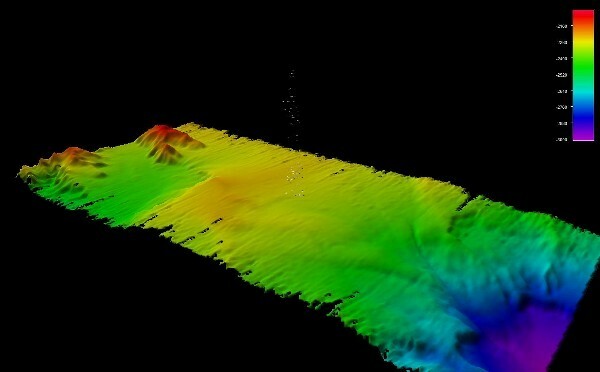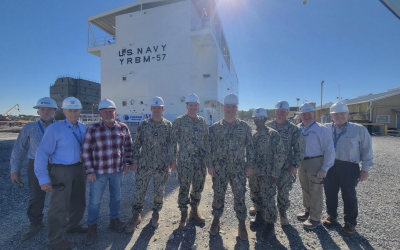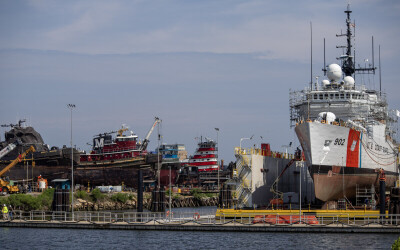A National Oceanic and Atmospheric Administration (NOAA) Ocean Exploration-led team has discovered what appears to be evidence of a large gas seep at a depth of nearly 1.4 miles (2,300 meters) along the Aleutian Trench. The discovery was found in data collected during the Seascape Alaska 1: Aleutians Deepwater Mapping expedition using multibeam sonars on NOAA Ship Okeanos Explorer.
While evaluating water column data collected using the ship’s sonar, mapping watchstanders noticed a noodle-like line emerging from the seafloor. Previous expeditions that have ground-truthed mapping data with remotely operated vehicle (ROV) dives have shown that this kind of line is actually created by the multibeam sonar sound pulses bouncing off bubbles close to the seafloor. Bubbles are indicative of gasses seeping up through the seafloor.
Scientists are interested in gas seeps like those discovered because they provide habitat for organisms like tubeworms, are potential sources of alternative energy and biopharmaceuticals, and for a host of other reasons. As of May 15, the team had found at least three gas seeps that were previously unmapped.
This expedition is the first in a series of six Seascape Alaska expeditions being conducted May through September to improve knowledge about unexplored and poorly understood deepwater areas offshore Alaska, with a particular focus on the Aleutian Islands, Gulf of Alaska, and Aleutian Trench. Expeditions will include mapping, ROV, and autonomous underwater vehicle operations, depending on the expedition. Expeditions in June-July and August-September will include dives to explore Alaska’s deep-sea coral and sponge habitats, hydrothermal vent communities, deep-sea canyons and seamounts, fracture and rift zones, and the water column — all streamed live to the oceanexplorer.noaa.gov website.





